( – promoted by TheMomCat)
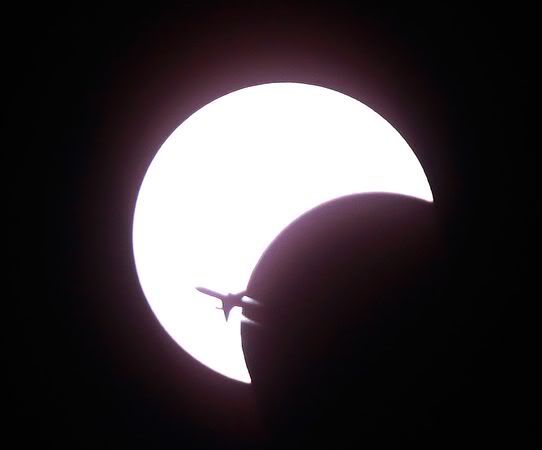 If you’ve ever visited the Daily Kos you may have noticed my nightly comments where I post a video from the series called Sixty Symbols on the Overnight News Digest. I thought you might enjoy these videos with some additional explication and exploration. There are a whole passel of them so getting through them all will take some time. I wonder, as I begin this random walk, where it will take me and what exciting and cool things I might learn and share. |
|
I’m sure you all have some understanding of solar eclipses, at least enough to know that making lots of noise will chase the sun eating dragon away. : ) Although it may look as if the Dragon Moon swallows a helpless Sun during an eclipse the Moon is, of course, much much smaller than the Sun. It is actually a happy coincidence that in the epoch of man the Moon’s apparent size nearly perfectly fits over the disk of the Sun.
Yet the Moon moves in an elliptical orbit. Sometimes it is closer to Earth, sometimes farther away. The Earth itself also moves in an elliptical orbit with the same effect with respect to the Sun (though to a much lesser extent—relatively). Considering these two facts helps us understand that the apparent sizes of the Sun and Moon can vary. Essentially the type of eclipse depends on the Moon’s apparent diameter.
|
|
Figure 3. displays the path of the July 22nd, 2009 (the eclipse in the Sixty Symbols video).The area of total eclipse is displayed by the dark shadow traversingthe globe. A Partial eclipse might be seen by observers in the lightly shadowed areas.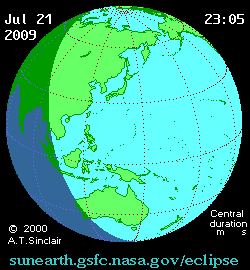 Figure 3. Path of July 22nd, 2009 Total Eclipse |
|
| The site of greatest eclipse for a total eclipse, mentioned above, is instant that the cone of the Moon’s shadowcomes closest to the Earth’s center—the location of longest duration.3 The July 22nd eclipse (the video’s eclipse) was the longest of the 21st century, lasting 6 minutes and 39 seconds and is a member of the same Saros cycle as thefamous May 29th, 1919 eclipse—the Einstein eclipse. A Saros cycle describes a set of eclipseswhere the Sun, Moon, and Earth return to the same configuration thereby producing eclipses that arevery similar. As you can see below the tracks of Saros 136 are very similar. Eclipses in a Saros cycle occur approximately 18 years apart. |
|
|
| Of course, the further away you are, as in the case of STEREO-B.As STEREO-B is 4.4 times further away from the Moon than Earth the shadow that the Moon casts against the Sun’s disk is 4.4 times smalleras you can see from the instrument calibration video shown below. |
|
| Over the next ten years there will be 6 total, 7 annular, 1 hybrid, and 10 partial eclipses.5 Below is shown the NASA table for the coming eclipses over the next ten years. I’m re-thinking mylong term goal of watching a ball game at all the Major League Baseball stadiums ☺. |
| Solar Eclipses: 2011 – 2020 | |||||||
| Calendar Date | TD of Greatest Eclipse | Eclipse Type | Saros Series | Eclipse Magnitude | Central Duration | Geographic Region of Eclipse Visibility | |
| (Link to Global Map) | (Link to Animation) | (Link to Google Map) | (Link to Saros) | (Link to Path Table) | |||
| 2011 Jan 04 | 08:51:42 | Partial | 151 | 0.858 | – | Europe, Africa, c Asia | |
| 2011 Jun 01 | 21:17:18 | Partial | 118 | 0.601 | – | e Asia, n N. America, Iceland | |
| 2011 Jul 01 | 08:39:30 | Partial | 156 | 0.097 | – | s Indian Ocean | |
| 2011 Nov 25 | 06:21:24 | Partial | 123 | 0.905 | – | s Africa, Antarctica, Tasmania, N.Z. | |
| 2012 May 20 | 23:53:53 | Annular | 128 | 0.944 | 05m46s | Asia, Pacific, N. America [Annular: China, Japan, Pacific, w U.S.] |
|
| 2012 Nov 13 | 22:12:55 | Total | 133 | 1.050 | 04m02s | Australia, N.Z., s Pacific, s S. America [Total: n Australia, s Pacific] |
|
| 2013 May 10 | 00:26:20 | Annular | 138 | 0.954 | 06m03s | Australia, N.Z., c Pacific [Annular: n Australia, Solomon Is., c Pacific] |
|
| 2013 Nov 03 | 12:47:36 | Hybrid | 143 | 1.016 | 01m40s | e Americas, s Europe, Africa [Hybid: Atlantic, c Africa] |
|
| 2014 Apr 29 | 06:04:32 | Annular | 148 | 0.987 | – | s Indian, Australia, Antarctica [Annular: Antarctica] |
|
| 2014 Oct 23 | 21:45:39 | Partial | 153 | 0.811 | – | n Pacific, N. America | |
| 2015 Mar 20 | 09:46:47 | Total | 120 | 1.045 | 02m47s | Iceland, Europe, n Africa, n Asia [Total: n Atlantic, Faeroe Is, Svalbard] |
|
| 2015 Sep 13 | 06:55:19 | Partial | 125 | 0.788 | – | s Africa, s Indian, Antarctica | |
| 2016 Mar 09 | 01:58:19 | Total | 130 | 1.045 | 04m09s | e Asia, Australia, Pacific [Total: Sumatra, Borneo, Sulawesi, Pacific] |
|
| 2016 Sep 01 | 09:08:02 | Annular | 135 | 0.974 | 03m06s | Africa, Indian Ocean [Annular: Atlantic, c Africa, Madagascar, Indian] |
|
| 2017 Feb 26 | 14:54:32 | Annular | 140 | 0.992 | 00m44s | s S. America, Atlantic, Africa, Antarctica [Annular: Pacific, Chile, Argentina, Atlantic, Africa] |
|
| 2017 Aug 21 | 18:26:40 | Total | 145 | 1.031 | 02m40s | N. America, n S. America [Total: n Pacific, U.S., s Atlantic] |
|
| 2018 Feb 15 | 20:52:33 | Partial | 150 | 0.599 | – | Antarctica, s S. America | |
| 2018 Jul 13 | 03:02:16 | Partial | 117 | 0.336 | – | s Australia | |
| 2018 Aug 11 | 09:47:28 | Partial | 155 | 0.737 | – | n Europe, ne Asia | |
| 2019 Jan 06 | 01:42:38 | Partial | 122 | 0.715 | – | ne Asia, n Pacific | |
| 2019 Jul 02 | 19:24:07 | Total | 127 | 1.046 | 04m33s | s Pacific, S. America [Total: s Pacific, Chile, Argentina] |
|
| 2019 Dec 26 | 05:18:53 | Annular | 132 | 0.970 | 03m39s | Asia, Australia [Annular: Saudi Arabia, India, Sumatra, Borneo] |
|
| 2020 Jun 21 | 06:41:15 | Annular | 137 | 0.994 | 00m38s | Africa, se Europe, Asia [Annular: c Africa, s Asia, China, Pacific] |
|
| 2020 Dec 14 | 16:14:39 | Total | 142 | 1.025 | 02m10s | Pacific, s S. America, Antarctica [Total: s Pacific, Chile, Argentina, s Atlantic] |
|
Table 1. Solar Eclipses: 2011 – 20205
|
If you live in Europe the last total eclipse you might have viewed occurred on August 11, 1999. This was Europe’s first since 1990 andfor Great Britain the first since 1927. European’s will have to be satisfied with partialeclipses (though a trip to the Faroes in 2015 might prove interesting).
|
|
|
|
The site of greatest eclipse will be in Christian County, very near Hopkinsville, Kentucky at about 1:25pm on the 21st ofAugust, 2017 and will last for approximately 2 minutes and 40 seconds. I’m just 400 miles away. Party! I’ll bet you too can hardly wait! If all that beer and fireworks just isn’t enough and you can wait a bit, in just seven more years another eclipse which will track an intersect with the 2017 eclipse within miles of Southern Illinois University. |
|
|
Abbondanza! Two total eclipses in 7 years.
|
As exciting and spectacular as these spectacular events are to regular folk just watching, they have been and are even more important and exciting to scientists, nerdy geeks that they are, as scientific events. An incredible amount of knowledged was gleaned from theirobservations. Eclipses provide an opportunity to learn, to test theories, and, likethe rest of us, a chance to wonder at the splendor of the universe.
In 1868 the previously unknown element Helium was discovered using Gustav Kirchhoff spectrometer by Pierre Janssen in the chromosphere of the sun during the eclipse of August 1868. From the Wikipedia article6
|
|
|
|
But, perhaps, the most important observation of an eclipse, one that probably has had the most impact on science over the last century came in 1919 when Sir Arthur Eddington lead an expedition to the Atlantic island of Principe to view the eclipse of May 29th, 1919.
Eddington was one of Einstein’s greatest advocates in Britain. He and his esteemed collegue Frank Watson Dyson, Astronomer Royal (1910-1933) mounted two expeditions to view the eclipse of May 29, 1919. Dyson entrusted Andrew Crommelin from the Royal Observatory off to far away Sobral in northern Brazil. Dr. Eddington to Principe, an island off the coast of Africa. The purposeof their expeditions was succinctly summarized in their paper of January, 1920. |
|
Eddington’s observations were the trigger that started a cascade of support for Einstein’s theory of gravitation, General Relativity. Their work supported the Equivalence Principal.
|
|
|
|
Well there you have it, quite possibly more than you’d ever wanted to know about eclipses even though there are, I suspect, terabytes more. I hope I’ve informed and entertained you for a momment, and I’d like to thank you for taking the time to read this stumbling meander around the light and the dark. |
|
References
|
| I wish to thank Dr. Amanda Bauer, (best supporting scientist award, the star was the Sun ☺), whose enthusiasm and sheer delight at just being where the Sun, the Earth, and the Moon did something spectacular was contagious, entertaining, and informative. I would also like to thank the scientists/teachers of University of Nottingham and Brady Haran for producing Sixty Symbols a tremendous contribution to the internet community. |

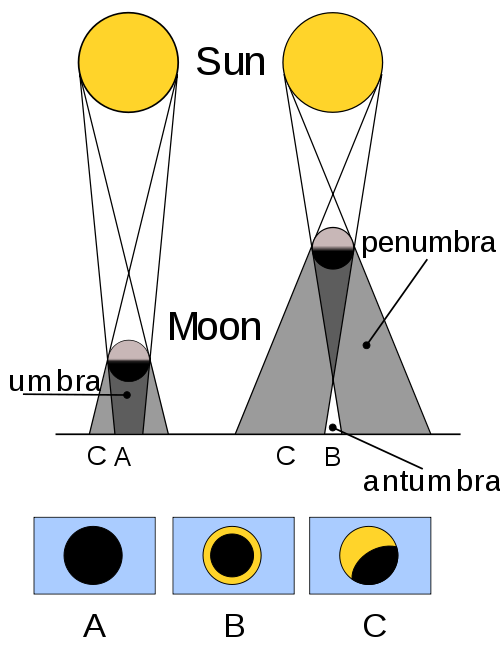
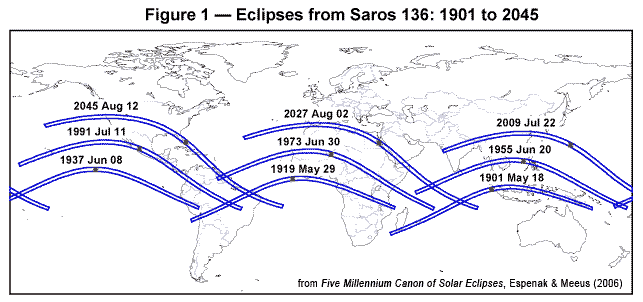
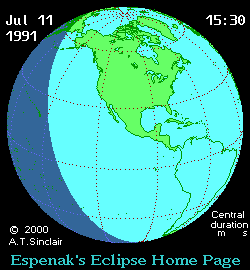
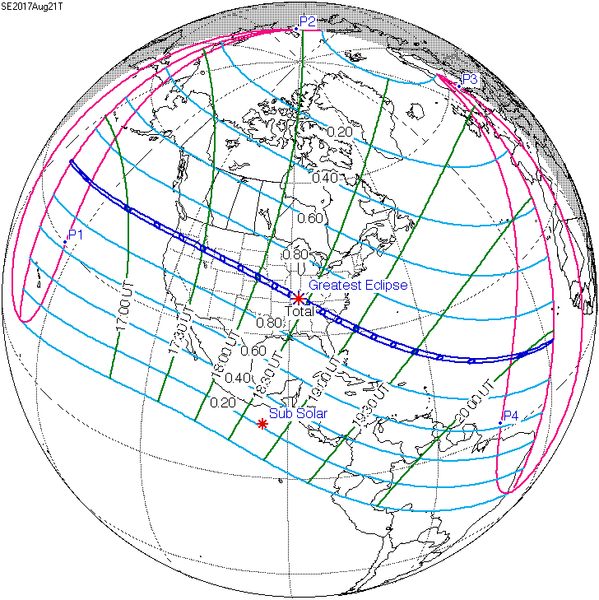
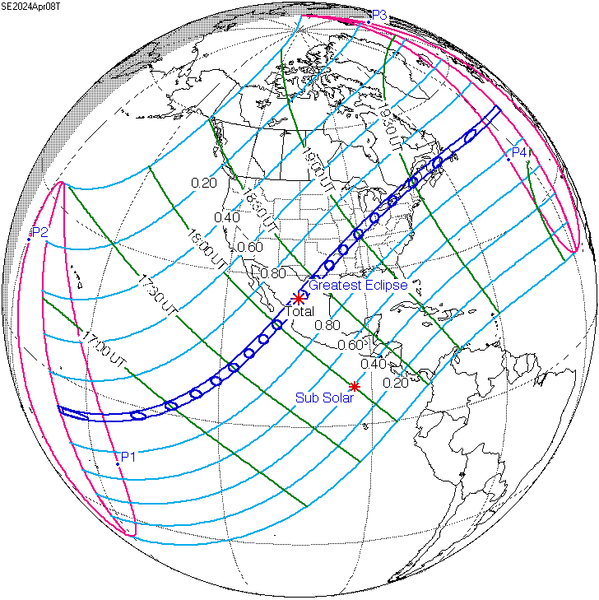

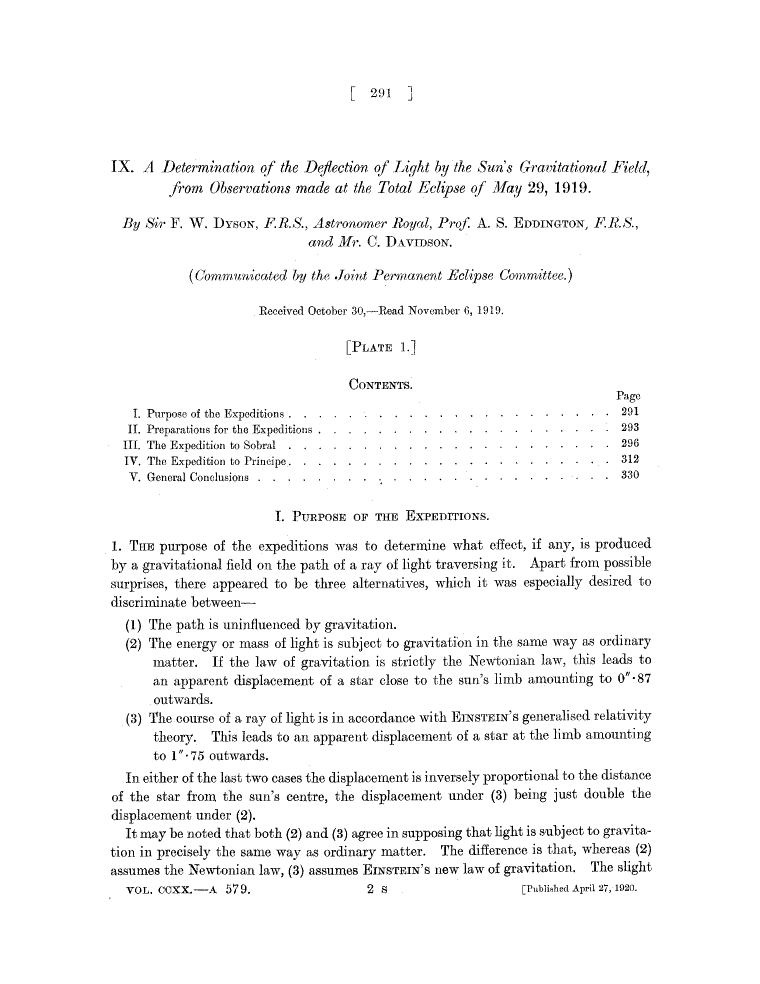

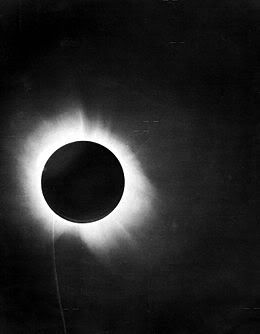
13 comments
Skip to comment form
Author
I hope you find this as fun to read at least equal to the struggles I had writing it 🙂
does the sun shine?
vs. Why does the sun really shine?